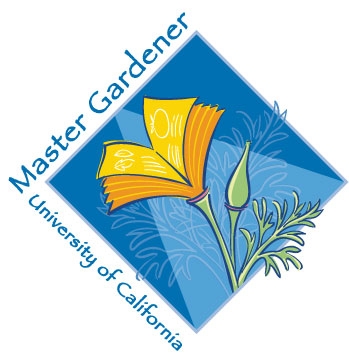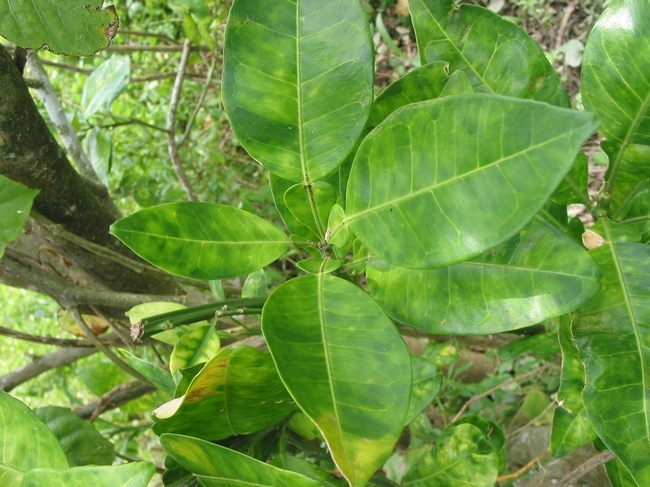From the UC Blogosphere...
What the Statewide Master Gardener Program Does for Us: Part III
In this post I want to point out more of the improvements to our program
that have resulted from the work of our Statewide Master Gardener office. I can personally attest to what a difference these improvements have made in Alameda County. We had none of the following when I became a Master gardener in 2001, and we were constantly making things up as we went along.1. Master Gardener Program Administrative handbook, June 2008: defines policies and procedures for MG programs all over the state. Provides guidance, helps to ensure consistency, and helps to avoid duplication of effort.
2. Along the same lines as the handbook, the Statewide Office has standardized a number of things that now project a consistent brand and message throughout the state. We have a state logo, a state tagline "Advice to Grow By...Ask Us!" and a number of items, including clothing, with the logo in the Master Gardener store.
3. The State Office created a yearly training for our Program Coordinators, called the Volunteer Management Institute, which improves the skills of the coordinators and helps improve the consistency in how MG programs are managed statewide.
4. The state office has organized advanced training for volunteers that many of us have taken advantage of: such as Sustainable Landscaping, Advanced IPM, and others.
The Master Gardener Program has come a long way in the 11 years since I became involved and much of that rapid improvement has happened since the Statewide Master Gardener Program was created in 2005! A big "thank you" to our state staff!
What positive changes have you seen since the Statewide Master Gardeners Office came about? Any I forgot to mention?
Climate change pushes West into a fire-prone future
A paper that examined climate change's likely effects on global fire patterns predicts the West will see more wildfire, said an article by Bettina Boxall in the Los Angeles Times.
The lead author of the paper, published Tuesday in the journal Ecosphere, was Max Moritz, UC Cooperative Extension specialist in the Department of Environmental Science, Policy and Management at UC Berkeley. Moritz, a wildfire expert, and his colleagues concluded that by the end of the century, much of the world will experience more wildfire than it does now.
Rising temperatures lengthen the fire season and dry out vegetation, making it more flammable. More rain could increase plant growth, producing more fuel to burn. In other areas, climate change may reduce fire. More rain in the tropics could decrease fire; less rain in other areas may reduce fuel levels and stunt plant growth, cutting the fire potential.
“Fire is not going anywhere,” Moritz said. The study results, he said, emphasize the need “to rethink how we live with fire and take it more seriously.”
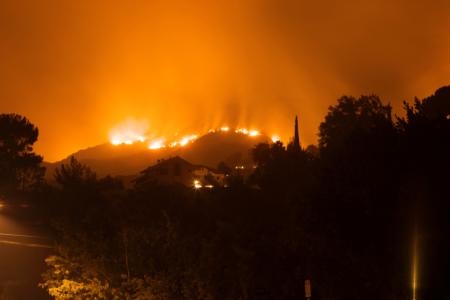
Climate change likely means more fire for the West.
Pollinator Paradise
Picture a pollinator paradise right where nature intended it to be--near an apiary. Staff research associate/beekeeper...

Beekeeper Elizabeth Frost in front of the pollinator patch she planted. (Photo by Kathy Keatley Garvey)

Flame skimmer dragonfly rests on an unopened poppy. (Photo by Kathy Keatley Garvey)
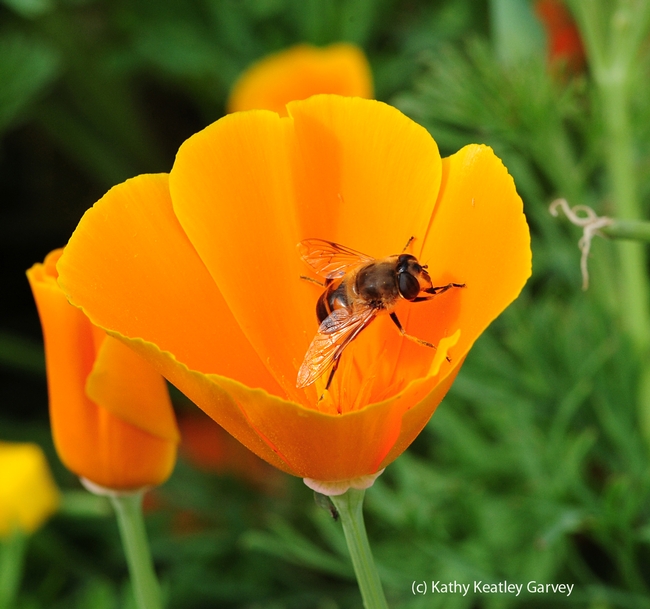
Drone fly crawls up a petal. (Photo by Kathy Keatley Garvey)
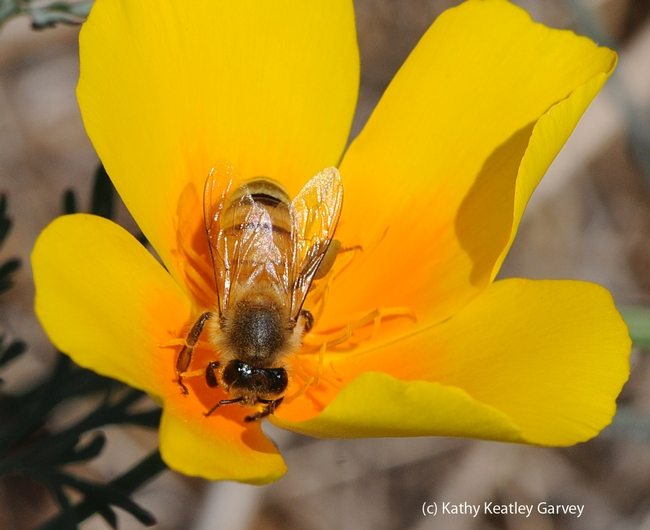
Honey bee foraging on a California golden poppy. (Photo by Kathy Keatley Garvey)
Micronutrient deficiency can look like HLB infection
Familiarity with symptoms caused by micronutrient deficiencies is important for citrus growers and pest control advisers to ensure such maladies are not confused with symptoms of Huanglongbing, reported Cary Blake in Western Farm Press.
Neil O’Connell, UC Cooperative Extension advisor in Tulare County, a citrus expert, recommends that field staff also be well versed on these issues since they are in the field daily during the citrus harvest.
Huanglongbing, a disease spread by Asian citrus psyllid, is the worst citrus disease in the world. The disease was detected on one tree in Southern California in March, the first such find in the state. Officials are asking for farmers and home gardeners to be on the look-out for other HLB-infected trees.
O'Connell says deficiencies of zinc, iron and manganese can resemble leaf symptoms found in trees with HLB.
"Some deficiencies have fairly similar symptoms," O'Connell said. "If you are very familiar with deficiency patterns in these elements then it is much easier to separate this out. You can recognize whether the problem is zinc, iron, manganese, or another deficiency while possibly ruling out HLB."
A distinguishing characteristic of HLB infection is a yellow area that crosses from one interveinal area to another, O'Connell explained.
Bed Check!
All winter long my bee condo housed 16 tenants...and one earwig. And quite comfortably, too, thank you. It all began last...

Newly emerged leafcutter bee outside her nest. (Photo by Kathy Keatley Garvey)
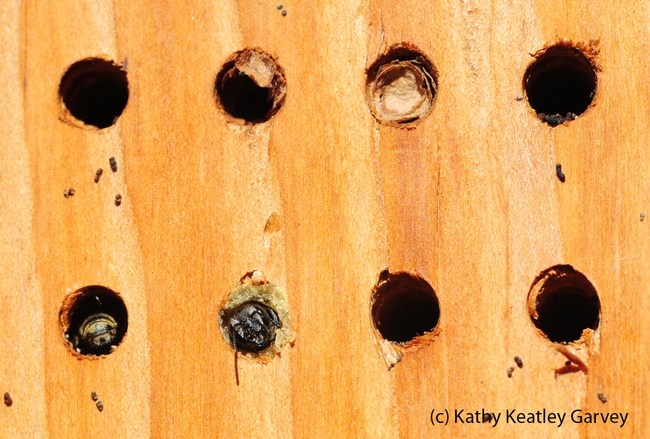
One leafcutter bee is tucked in head first; the other is ready to leave. (Photo by Kathy Keatley Garvey)




